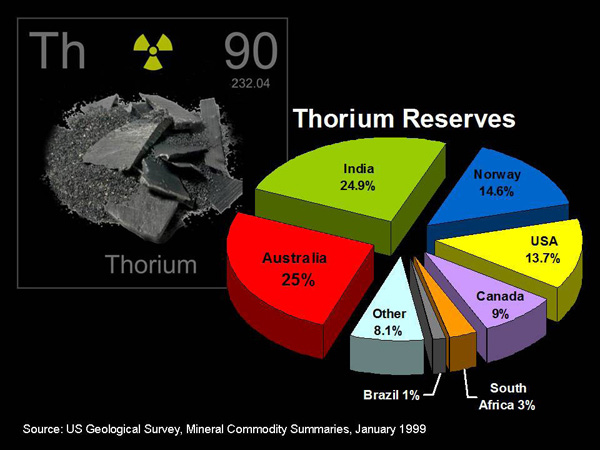A Critique of Wendy Doniger’s “The Hindus, an Alternative History” Penguin Books (2009)
Vishal Agarwal Feb 20th, 2014The author is a scholar of Hindu shastras, and a Sunday School Teacher at a Hindu Temple in the United States.
“Aldous Huxley once said that an intellectual was someone who had found something more interesting than sex; in Indology, an intellectual need not make that choice at all.”
(Wendy Doniger in ‘When the Lingam is Just a Cigar, Psychoanalysis and Hindu Sexual Fantasies’).
Introduction:
![the_hindus_alt_history_critique_vishal_agarwal]() Wendy Doniger’s book “The Hindus, an Alternative History” (see the cover), published and distributed by Penguin has been a phenomenal sales success. Already (in June 2010), more than 600 libraries in North America have acquired a copy of the book, in one year since its publication. The Indian division of Penguin has brought out an Indian reprint as well. Doniger claims that her book is about Hindu women, low castes, dogs and horses. But these merely appear to be an excuse for her to indulge in bouts of lewd descriptions, imaginary rapes, violence, titillating sleaze, drugs, booze and the like – all of which is then superimposed on the Hindus and on their traditions. As usual, she kinks fairly straightforward narratives in Hindu scriptures to present her own pornographic versions.
Wendy Doniger’s book “The Hindus, an Alternative History” (see the cover), published and distributed by Penguin has been a phenomenal sales success. Already (in June 2010), more than 600 libraries in North America have acquired a copy of the book, in one year since its publication. The Indian division of Penguin has brought out an Indian reprint as well. Doniger claims that her book is about Hindu women, low castes, dogs and horses. But these merely appear to be an excuse for her to indulge in bouts of lewd descriptions, imaginary rapes, violence, titillating sleaze, drugs, booze and the like – all of which is then superimposed on the Hindus and on their traditions. As usual, she kinks fairly straightforward narratives in Hindu scriptures to present her own pornographic versions.Medieval India is not her forte at all, and Doniger is often seen reproducing (and even amplifying) the errors already present in her secondary and tertiary sources. The book is more than 600 pages long, and the number of errors average more than 1 per page. There are errors of chronology, of historical dates and sequence of events, geography, verifiable historical facts, proper names, translations of Sanskrit texts and so on. These errors are compounded by strained and agenda driven interpretations that whitewash medieval atrocities on Indians, perpetuate colonial and racist stereotypes about Hindus, attribute many positive developments within the Hindu society to impulses from Christianity or Islam and grossly distort historical evidence.
In her book, Hindu Deities are presented as lustful, Hindu Saints are falsely alleged by the author to have indulged in sexual orgies, or to have ‘taken actions against Muslims’, Hindu worshippers are compared to cheating boyfriends, ‘intoxication’ is a ‘central theme of the Vedas’ and Hindu scriptures are presented as a litany of tales of faithful women forsaken by their ungrateful husbands. One wonders if these caricatures of Hinduism really reflect the author’s own life rather than the culture and traditions of Hindus. Doniger claims to ‘love’ Hindus or their culture in her book, but this claim appears quite bizarre, perverse and frightening. The sections below give examples of these errors and biases, with some critical comments. For a detailed, chapter by chapter, para by para critique of the book, the reader should consult the website http://vishalagarwal.voiceofdharma.com/articles/thaah/ andhttp://chitraraman.voiceofdharma.org/files/THAAF-10.pdf I. Factual Errors:
The book has four maps immediately after the Index. Unfortunately, the maps are full of errors. We point some of these errors below:
- In the first map (‘India’s Major Geographical Features’), the Waziristan Hills area is marked erroneously as ‘KirtharRange’, which is actually several hundred miles further south.
- In the second map (‘India from 2500 BCE to 600 CE), Kashmir is marked north of the river Indus (it should be south of Indus); Baluchistan is marked at the boundary between Sindh and Punjab whereas it is further west; Magadha is marked in northern Orissa and the bordering areas of Bihar (it should be further north, just south of the Ganga); Mithila is marked a bit north‐west of its actual location and so on.
- In the third map (‘India from 600 CE to 1600 CE), at least four historical sites are marked several hundred miles from their correct geographical location – Janakpur, Nagarkot, Mandu and Haldighati.
- In the fourth map (‘India from 1600 CE to the Present’), Kanpur is indicated as the modern name of the ancient city of Kanauj. This is incorrect and the two cities are distinct from each other.
Some of the errors are so careless that one wonders if the copy editors did not do their job at all. Some examples –
- On page 67, she claims that the entire Harappan culture had a population of 40,000. This is actually the estimate for the population of just one site (Mohenjodaro). Estimates for the entire culture (with almost 2000 known sites) range for 500000 upwards. On the same page, she places Lothal on the delta of Indus, whereas it is about 200 miles from there.
- On page 112, she includes wheat as a food item in the diet of Rigvedic people. Anyone remotely familiar with the Rigveda however will know that wheat is first mentioned in Vedic literature only in the Yajurveda.
- On page 194, she says – “A profound psychological understanding of addiction (sakti, particularly excessive attachment, ati-sakti+) to material objects….+ The title of Gandhi’s essay on the Gita says it is about asakti‐yoga, usually translated as “selfless action but more precisely the yoga of nonaddiction.” The pseudo-etymologizing can be countered with the fact that the word asakti itself means ‘deep attachment’ and is in fact the yoga of deep devotion to God advocated by some Vaishnava schools. Gandhiji’s work is titled not asakti‐yoga but as Anasakti Yoga (the ‘Yoga of selfless action’, or non-attachment to the results of one’s Karma) as any student of Gandhi’s work would know.
Several statements in her book display her amateurish understanding of Indian history and Hindu philosophy, and reliance on third hand accounts. For example,
- On page 165, she claims – “The eastern Ganges at this time, the seventh through the fifth century BCE, was a place of kingdoms dominated by Magadha, whose capital was Rajagriha, and Koshala‐Videha, whose capital was Kashi (Varanasi, Benares).” In reality, Koshala, Videha and Kashi were separate political entities. Eventually, Koshala conquered Kashi. Kashi was not the capital of Koshala‐Videha. In the Upanishadic times, Videha was a kingdom, but by the time of Buddha, it had become an oligarchy and was eventually absorbed in the Vajji confederacy and then in Magadha. Therefore, Doniger’s summary of the political situation is quite wrong.
- In chapter 18 where she covers Hindu philosophy (interesting, she has placed this chapter chronologically after the Delhi Sultans!), she gets even elementary facts about all the six schools of Hindu philosophy all mixed up. For example, she claims (on p. 505) that in the Vaisheshika philosophy, all objects are made of atoms of nine materials. According to this school, only the four material elements are made of atoms, the mind is ‘atomic’ in size, and the other four are all pervading (and not composed of atoms).
- On page 200, Doniger claims that Hindu scriptures always speak only of 3 worlds. In reality however, Hindu scriptures (a fact known to most Hindus) frequently speak of 7 realms (sapta‐lokas), 14 realms (chaturdhasha‐bhuvan) etc. See for example Vyasa’s commentary on Yogasutra 3.26
And the less said about Doniger’s chronological understanding of Indian history, the better. She gets the dates of Hindu saints (Mira, Tulsidas, Kabir), Muslim emperors (Humayun etc), dynastic periods etc. wrong in all chapters. And beyond that, she places chapters on ancient Hindu traditions after chapters on Medieval Islamic rule, as if the former borrowed from the latter.
II. Outdated Information:
Doniger fails to use current specialist literature while writing her chapters on ancient India, resulting in perpetuation of old and outdated theories and facts. For example, a cursory look at the bibliography for chapter 3 reveals that of the 110 endnotes, only 2 are derived from the works from contemporary western Harappan archaeologists (1 each from Kenoyer and Possehl), two from contemporary Indian archaeologists, and half a dozen or so from almost a century old report by Marshall. The rest approx 100 end notes show her reliance on secondary works of India’s agenda driven Communist historians (e.g., Romila Thapar, Debiprasad Chattopadhyaya), authors of generalist books in Indian history (e.g., John Keay) and other motley non‐specialists in Harappan archaeology. Knowledge of this civilization has been changing practically every year due to ongoing archaeological digs, and Doniger’s near total ignorance of works of contemporary archaeologists of Harappan culture makes the chapter outdated and amateurish, in addition to being full of laughable errors. As an example of her ignorance, we can point out to her virtual black‐out of sites in the Ghaggar basin, in the Doab and in Gujarat. Throughout the chapter, the impression given is that the valley of river Indus was the center of gravity of that culture, whereas it has now been known for at least 2 decades that 65% or more of the sites were in the Ghaggar valley, Kutch and Saurashtra.
On page 67, she claims that Harappa and Mohenjodaro are the only two major cities of the civilization. This reflects the understanding till 1960s, but now we know of at least 5 major cities.
In chapter 4, dealing with the post-Harappan period, she regurgitates a century old (and now invalidated) arguments to ‘prove’ that the Harappan culture could not have been Vedic.
In her chapter on Dharmasastras, she claims (p. 304 sqq.) that the first Sanskrit inscription was published by the Indo-Greek King Rudraman. And then she goes on to create a pseudo-history of how the foreign ruler did this to gain legitimacy in the eyes of Hindus (p. 307) etc. One could have appreciated this remark if it were in a book written 30 years ago, but since then, at least 2 chaste Sanskrit inscriptions predating Rudraman’s inscription by almost 250 years and attributed to the Brahmin Kanva dynasty have been found in the region of Mathura.
III. Perpetuation of Racist and Orientalist Stereotypes:
On pages 468-469, Doniger says – “Mosques also provided a valuable contrast with temples within the landscape of India….The mosque, whose serene calligraphic and geometric contrasts with the perpetual motion of the figures depicted on the temple, makes a stand against the chaos of India, creating enforced vacuums that India cannot rush into with all its monkeys and peoples and colors and the smells of the bazaar and, at the same time, providing a flattering frame to offset that very chaos.” Doniger’s comment is quite racist and orientalist. It is simply unbelievable that even in this age, a scholar can essentialize the Hindu Main St. of sultanate India as “monkeys and peoples, colors and smells, and chaos” – just a variant of the cow, caste and curry stereotype of India and Hindus. Doniger makes it appear that the large scale displacement of temples by mosques was some kind of an architectural blessing on India. It is pertinent to ask if she has similar views on ongoing destruction of Hindu temples by Islamists in Afghanistan, Pakistan, Bangladesh and in Kashmir (India).
In fact, towards the beginning of the book itself (p. 40), Doniger makes the following derogatory remark against the Hindus – “If the motto of Watergate was ‘Follow the money’, the motto of the history of Hinduism could well be ‘Follow the monkey’ or, more often ‘Follow the horse’.”
III. Trivializing Hindu Spirituality:
Spiritual scriptures are not meant to be read literally. They abound in analogies, metaphors and symbolism that convey deeper truths. Unfortunately, Doniger debases profound scriptures like the Upanishads and gives them her own crass and often obscene spin.
For example, while discussing Upanishadic descriptions of the journey of the soul after death, Doniger remarks (p. 175) – “The people who reach the moon in the Brihadaranyaka are eaten by the gods (as they are eaten by animals in the Other World in the Brahmanas), but the gods in the Chandogya merely eat the moon, a more direct way to account for its waning.” This is an example of Doniger understanding the mystical language of the Upanishads in a very literal way, missing their heart completely. The texts use a metaphorical and poetic language to stress that performance of good karma alone is not adequate because its results are finite. Eventually, these souls that reach the ‘moon’ due to performance of good karma also have to take a rebirth. No heaven is permanent – this is the import of these passages.
She caricatures the Yoga philosophy of Patanjali as exercises of mind and body (p. 505). In chapter 18, dealing with Darshanas, she often sacrifices accuracy in favor of literary cutisms.
IV. Academic Pornographic Exercises:
On Page 79, Doniger ignores archaeological contexts completely to speculate that the great bath at Mohenjodaro could have been a brothel! On page 124, while commenting on Rigveda 10.162, Doniger remarks – “It appears that a woman’s brother too is someone she might expect to find in her bed, though the Rig Veda severely condemns sibling incest…” The relevant hymn has no hint of sibling incest. It is all in Doniger’s mind.
While discussing the Upanishads (pp. 177-178), she says – “A remarkably open‐minded attitude to women’s infidelity is evident in the mantra recommended to make a sexual rival impotent.” Doniger than cites Brihadaranyaka Upanishad 6.4.12, and gives her own twist – “In contrast to almost all of later Hinduism, which punished a woman extremely severely for adultery, this text punishes only her partner. Moreover, this punishment is intended (only) for a lover of his wife that the husband hates and therefore not necessarily for a lover that he does not hate, a most permissive qualification.” This is quite a pervert interpretation by Doniger (typical of her) and assumes a husband who can sometimes not hate the paramour of his wedded wife. Does Doniger personally know husbands who would not feel bad about their wives being seduced by other men? It appears more likely that the Upanishad does not consider the possibility of the wronged husband forgiving or loving the offending male in this passage.
In her chapter on Tantra, she of course does not resist the temptation to re-christen the Pancha-makaaras (5 M words) as the ‘Five F words’ (p. 424), demonstrating her juvenile mind. In chapter 18, she misquotes Hindu texts to allege that Saint Shankaracharya indulged in a sexual orgy with another king and his queens. Is this an alternative history or pornographic fiction?
V. Negationism:
Just as the neo-Nazis deny the Jewish Holocaust, Doniger seeks to deny or apologize for the large scale destruction of Hindu shrines, and persecution of Hindus under the rule of Muslim kings in medieval times. At least 5 times in her book, she makes the atrocious and historically untenable claim that the destruction of Hindu structures by fanatical Islamic rulers was foreshadowed by supposed destruction of Buddhist shrines by Hindus in ancient India. This claim is made in irrelevant contexts (in chapter on Harappan culture, chapter on Vedic culture etc.) and can only be called pathetic propaganda, and apologia for current day iconoclasm by the Taliban. She perversely terms this religiously motivated iconoclasm as ‘recycling’ of architecture.
On page 449, she writes – “He [Muhammad bin Qasim] kept his promises though he did impose the jaziya, a tax on male adults who would have been liable to military service if they had been Muslims; non‐Muslims were excused this duty but were required instead to pay for their military protection.” One wonders – Military protection of non‐Muslims from whom? From non‐Muslims? What if the non‐Muslims did not want the Muslim rulers to protect them from non‐Muslims? It appears that an apologist for Islamism has written these sentences in Doniger’s book. Jaziya was a poll tax (like the ‘protection money’ extracted by mafia gangs from a helpless society in return of freedom from molestation by the same gang) demanded from non‐Muslims because they are infidels living under a ‘Muslim state’. Sanctioned by the Koran, the tax (often as much as a month’s income every year) was meant to demonstrate that the infidels were inferior to Muslims. It was an instrument to humiliate them and disarm them, exclude them from administration and sometimes induce them to convert to Islam. Doniger does not ask if the Hindus had the option of wielding arms for the Arab state of Sindh and therefore exempt themselves from Jaziya. Doniger’s apologia also falsely assumes that each and every adult Muslim male in India was a member of the Arab army in Sindh. Throughout the Muslim rule in India, large sections of the Hindu society were forced to disarm themselves (so that they are not a threat to the Muslim rulers) and suffered economic hardships and pressures to convert to Islam as a result. Even as we write, the Taliban are forcing Hindus and Sikhs in parts of Pakistan to pay astronomical amounts of money as Jaziya failing which they are either expelled or killed. Therefore, it is ethically and socially irresponsible of Doniger to peddle these kinds of apologias for this hated poll‐tax meant to humiliate the ‘infidels’.
On the destruction of Hindu temples under Islamic rule, she pens this apologia (page 455) – “Some Muslim rulers, like some Hindu rulers before them, destroyed Hindu temples. Desecration was not necessarily prompted by bigotry, though some rulers might well have been motivated (or have claimed to be motivated) by religious fanaticism, a hatred of idolatry or polytheism or any religion but Islam. Some, lured by the legendary wealth of temples, did it to get the plunder, and others went for the temples because as we saw in South India, the temples were the centers of political and economic power.” Doniger’s attempts to equate Islamic iconoclasm with ‘Hindu iconoclasm’ are derived from the writings of apologists of Islam (e.g., Richard Eaton) and Indian Marxists. A historian Andre Wink, criticizing these views, puts the historical record in its correct perspective – “Apologists for Islam, as well as some Marxist scholars in India, have sometimes attempted to reduce Islamic iconoclasm in India to a gratuitous ‘lust for plunder’ on the part of the Muslims, unrelated in any direct way to the religion itself, while depicting Hindu temples as centers of political resistance which had to be suppressed. Concomitantly, instances have been described in the popular press of Hindu destruction of Buddhist and Jain places of worship, and the idea was promoted that archaeological evidence shows this to have happened on a large scale, and hence that Hindu kings could be placed on a par with the Muslim invaders. The fact is that evidence for such ‘Hindu iconoclasm’ is incidental, relating to mere destruction, and too vague to be convincing.”
Two pages later, Doniger makes this untenable generalization – “The difference is not merely that some Muslims may have had the additional invective of iconoclasm but that for the most part during this period the Turks had more power to destroy than Hindus to destroy Turks. But the will, including, in many quarters, goodwill, was there on both sides.” This statement, meant to balance the large scale Islamic iconoclasm with the clearly much fewer instances of Hindu retaliation, is not supported by historical facts. Throughout the book, Doniger castigates and berates Hindus for imagined reasons, and apologizes for the persecutors of Hindus. Doniger’s words are as absurd as say, “The difference is not merely that some Nazis may have had the additional invective of anti‐Semitism but that for most part during WWII the Nazis had more power to destroy than Jews to destroy Nazis.” It is not true that the Hindus everywhere had less power to destroy Muslims at all times. What needs to be pointed out is that even when Hindus ruled parts of India (as in the Vijayanagara empire, Rajput kingdoms, Orissa, Assam, the Maratha Empire etc.) for several centuries after the establishment of Muslim rule over other parts of India, they (Hindu rulers) refrained from any large scale destruction of mosques, forcible conversions of Muslims, massacres of Muslims, imposition of additional taxes on Muslims, defilement of holy books of Islam, disarmament of Muslims, rapes of Muslim women etc. in their domains, due to the tolerant and inclusive nature of Hinduism – a positive characteristic of Hinduism that Doniger will perhaps not permit. There is contrary evidence to counter the claim that goodwill prevailed at all times between Hindus and Muslims. For instance the often quoted statement of Al Biruni – “The repugnance of the Hindus against foreigners increased more and more when the Muslims began to make their inroads into their country….Mahmud utterly ruined the prosperity of the country…Their scattered remains cherish, of course, the inveterate aversion towards all Muslims. This is the reason too, why Hindu sciences have retired far away from those parts of the country – conquered by us, and have fled to places which our hands cannot reach yet.”
On page 546, she claims that there is evidence for fewer than 200 forcible conversions of Hindus to Islam during the reign of Aurangzeb. Entire communities in northern India attribute their Islamic faith to conversion under duress during Aurangzeb’s rule but Doniger expects that we should have a conversion certificate for each and every case from the 17th century.
VI. Demeaning Remarks against Hindus:
Doniger makes sweeping disparaging remarks against Hindus and their tradition in her book. For example, writing about the wife of a gambler described in the Rigveda, she says (on page 123) – “The gambler’s wife is one of a more general company of long‐suffering wives, devoted but often deserted, who people ancient Hindu literature and the society that this literature reflects.” On the same page, she remarks that women appear only as ‘objects’ of men in the Rigveda – a wrong claim that insults Hindu traditions.
On the next page, Doniger calls the Vedic worshipper’s successive praise of different Deities as ‘serial monogamy’ and then gives this parallel – “You, Susan, are the only woman I’ve loved; you are the only one.” “You, Helen, are the only woman I’ve ever loved; you are the only one.” Comparing a Vedic worshiper to an unfaithful, untruthful and philandering boyfriend is a perfect example of how Doniger’s personal biases and cultural conditioning render her deaf and blind to an ethos totally different from her own. Her flippant analogy, besides being incredibly disrespectful, fails to even remotely convey the true spirit and intent of a Vedic worshiper. What Doniger forgets is that in real life,Susan and Helen are completely different women, and the debauched boyfriend will not reveal his love for Susan to Helen or vice versa. But the Vedic Deities are not separate from each other, and the worshipper’s devotion (or lack thereof) to one Deity is not hidden from the other Deities either! The Vedic Deities are born of each other, they merge to constitute one Divinity, their origin is One, they represent different aspects of One truth and so on – all these are some inter‐relationships of Deities stated in the Rigveda. Surely, Susan cannot be born of Helen or Helen of Susan!
Throughout the book, Doniger credits non-Hindus with numerous good innovations in the Hindu society. Conversely, she blames Hindus for the flaws of others! For example, on page 450, she says – “In 1350, a century after Raziya’s death, the historian Isami objected to her blatant interracial liaison, remarking that a woman’s place was at her spinning wheel….The sexism they already had in India, thank you…” . Now, the historian Abdul Malik Isami belonged to a family of Arab nobles who had migrated to India a century earlier. His work ‘Futuh‐us‐Salatin’ is in Persian and it can hardly represent the prevalent attitudes of Indians (who were more than 90% Hindus) in those days. To ridicule the sexism of 14th century Indians on the basis of his statements is unfair to Indians. For that matter, Isami hated Hindus and even chided Muhammad bin Tughlaq (the then Sultan of Delhi) for being soft on Hindus19 even though Tughlaq had occasionally indulged in bouts of temple destruction and slaughter of Brahmins. Will Doniger then say – “The hatred for Hindus they already had in India, thank you…”
On page 458, she blames the Hindus for the practice of veil worn by Muslim women – “In the culture at large, Hindus adopted a number of Muslim social customs. When the royal women of the Turks and the Rajputs first met, the Muslim women did not keep particularly rigidly to purdah; they joined in the drinking parties and literary salons…..It was after they had lived in India for a while and encountered the Rajput codes of modesty and honor that the women were more strictly concealed by the curtain of purdah and the zenana (harem) and at the same time also adopted some aspects of the Hindu caste system. Hindu women, in turn, adopted a modified version of the Muslim purdah. What a pity that each side took the worst of both the worlds; why not ditch both purdah and caste?” The examples given by Doniger to show that Hindus and Muslims borrowed the worst from each other does not seem to bear logic because her statements actually seem to suggest (falsely) that Hindus did not borrow anything bad from Muslims, whereas the Muslims borrowed caste as well as purdah from the Hindus! In fact, her generalization only shows her prejudices against Hindus because historians who have looked at the historical data available have reached different conclusions. For instance, it is pointed out that we do not get any reference to purdah in the history of Rajputs prior to the Islamic conquests and there are several instances in history where Rajput women fought in battles as late as the 14th cent., and also participated with their men‐folk in outdoor games. Moreover, there was no purdah among Hindu women in South India – the area least affected by Islamic rule. Even if the Turkish invaders did not have caste, they had their own systems of social stratifications and differentiations along the lines of ethnic origins. And whereas the Hindu rulers did not accord a second class status to Muslims within their dominions, the Muslim rulers in general accorded a lower status to Hindus than Muslims in their rule. The Turkish looked down upon native Indian converts to Islam, and chroniclers like Barani did not mince words in considering these converts as wretches, and inferior to the true blooded Muslims from Central Asia and Arabia. Surely, this religious discrimination and racism was not due to Hindu influence!
On page 468, she even makes the patently false claim that destruction of Hindu temples motivated them to construct even grander temples, as if Islamic iconoclasm was a blessing upin the Hindus.
Doniger even goes to the extent of blatant falsification of the historical record. For example, she claims (on page 459) that Bengal’s Sultan Ala‐ud‐din Husain (r. 1493 – 1519) patronized the Hindu saint Chaitanya Mahaprabhu. The historical biographies actually show that the Saint stayed away from the realm of the Sultan to prevent his capture, and the Sultan himself destroyed numerous Hindu temples.
On page 507, she claims that -“[Shankaracharya’s] philosophy… may have been buoyed up by the need to respond to the monotheist philosophies of Islam…” Similarly, she credits Christianity with innovative features of the Dvaita philosophy (even though some of them like everlasting hell can be easily credited to Jain sources). She claims that the Vaishnava doctrine of Prapatti might have been an adaptation of Islamic doctrine of surrender to Allah (p. 515).
On page 467, Doniger makes the ridiculous remark that Hindu heroes Harihara and Bukka double-crossed the Muslim Sultan who had captured them and converted them to Islam, by reverting to Hinduism when they were able to get more than a 1000 miles away from their captor! No Hindu hero escapes her wrath. She alleges that Ramanuja ‘took action against the Muslims’ (p. 510) when all he did was to retrieve a Hindu icon from Muslim captivity. While discussing the biographies of the trinity of Vedanta (Shankaracharya, Ramanujacharya and Madhvacharya), all she selects are episodes that can be given a kinky twist, and ones wherein she can accuse these Saints of behaving in an unsaintly manner.
Doniger’s worst invectives are of course reserved for cherished Hindu Deities. She portrays Lord Rama as a mentally weak, misogynist and violence prone character who acted unfairly against Shurpanakha! Apparently, according to Doniger, Rama banished Sita from Ayodhya because he was scared of becoming a slave of senses like his father Dasharatha!
The Mahabharata has several women characters who act as guides and teachers of kings and sages. But in her chapters on the Mahabharata, all that Doniger seems concerned about is who slept with whom!
VII. Culturally Insensitive Remarks:
On page 133, while discussing the Vedic cremation, she comments – Discussing Rigveda 10.16.1 which asks Agni to consume the body being cremated thoroughly, Doniger remarks – “The great French Indologist Loius Renou translated the idea of being cooked perfectly as au point, just as one would say of a good steak.” Doniger obviously knows that beef is an anathema to modern Hindus, and perhaps for this reason, she has made a remark that would be highly offensive to Hindus today, especially when made in the context of their holy scriptures. So much for cultural sensitivity and appreciation of diversity!
VIII. Cynical and Illogical Speculations and Interpretations:
On page 170-171, Doniger proposes a cute theory as an explanation for the origin of the theory of reincarnation – “The theory of reincarnation, a recycling not of tin cans but of souls, may reflect an anxiety of overcrowding, the claustrophobia of a culture fenced in, an kind of urban Angst….Is this fear of crowds related to the shock of the new experience of city life in the Ganges Valley? Were there already slums in Kashi (as there may already have been in Harappa)? Is a fear of this sort is what inspired the theory of reincarnation, who precisely was it who was afraid?” The logic used by Doniger militates against the conclusion drawn by her. If there was overcrowding on this earth, why would Indians want dead persons to take rebirth on earth again? They’d want them to go to other worlds and just stay there. Reincarnation is a very wide‐spread belief found in numerous cultures all over the world, including societies that live in sparsely populated and remote islands. Doniger’s views are too speculative because there was plenty of place for cities to expand into the surrounding country‐side and forests in this period. In fact, the Buddhist scriptures (Sutta Nipata for instance) makes the Buddha yearn for a good time when there will be continuous human inhabitations that are not interspersed by forested land.
IX. Irrelevant Meanderings:
Quite often, her ‘alternative history’ dwells on topics that are completely un-related Hindu women, Dalits or even to animals. For example, Doniger devotes 2 pages (pp. 566-568) to a discussion on the elite Muslim women in Mughal harems, and Muslim women in other dynasties. What does this digression have to do with the history of Hindus? This is just one of the dozens of useless digressions in the book that unnecessarily and greatly increase its bulk.
For a book that claims to be an alternative history of Hindus, it is really strange that Doniger almost ignores the contributions of Hindu culture to S E Asia and Central Asia. She devotes a fairly amateurish chapter on the Hindu diaspora, restricting herself to the United States. And there is practically zero discussion on entire genres of Hindu scriptural traditions like the Pancharatra Agama. She regurgitates instead the century old colonial and racist stereotypes of Hindus and their tradition, repeating the cow-caste-curry-Sati tropes.
So what really is alternative about the book?
Read in PDF :-
http://hindureview.com/2014/02/20/critique-wendy-donigers-hindus-alternative-history/You might also like:




 Vijay Kumar Singh
Vijay Kumar Singh 





























































